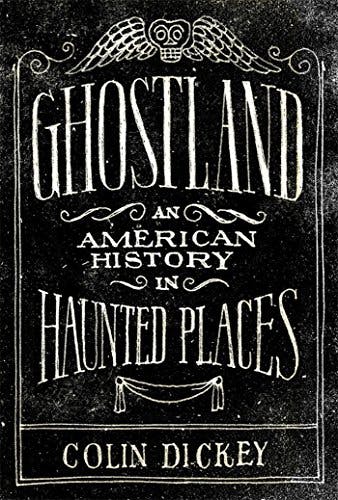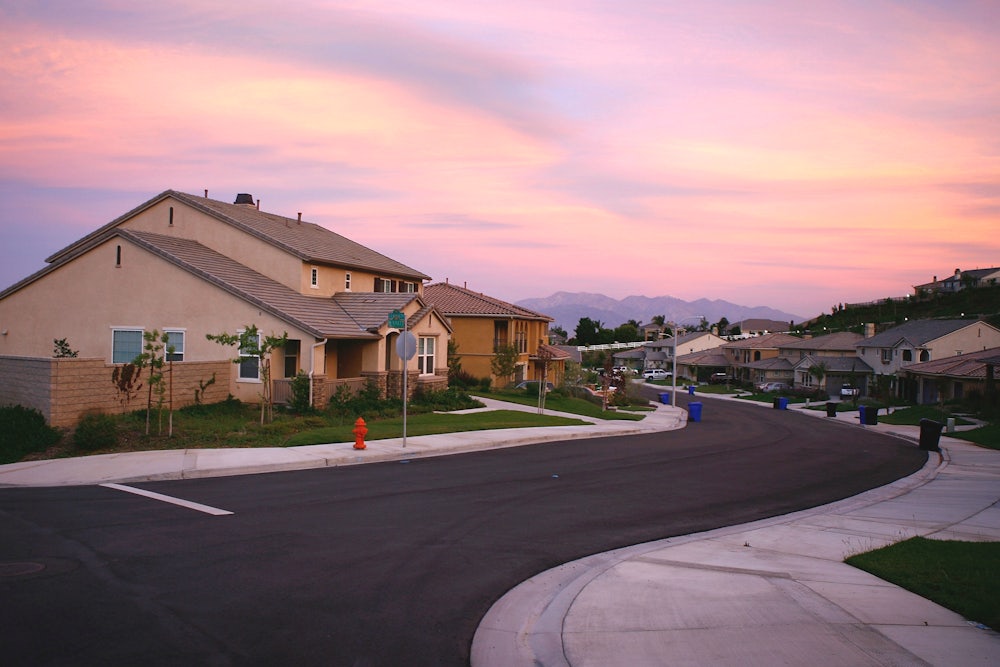“America is not a young land,” William S. Burroughs writes in Naked Lunch; “it is old and dirty and evil. Before the settlers, before the Indians... the evil was there... waiting.” It’s this same belief in an old, dirty evil that drives so many of our modern ghost stories. There are haunted bridges and haunted alleyways, haunted parks and haunted parking lots. But in the United States, the most common—the most primal—haunted place is a house. Home ownership has always been intertwined with the American dream; we have magnified this simple property decision in part because it represents safety and security. The haunted house is a violation of this comfort, the American dream gone horribly wrong. And in the last few decades, the most common cause for a house’s haunting—a problem cited so frequently it’s almost become a cliché—is the Indian burial ground.
The Anglo fascination with Indian burial lands stretches back at least to the eighteenth century. The Revolutionary poet Philip Freneau was one of the earliest to approach these sacred lands with a mix of exoticism and foreboding. In his 1787 poem “The Indian Burying Ground,” he saw the spirits of vanquished Indians still hunting, feasting, and playing:
Thou, stranger, that shalt come this way,
No fraud upon the dead commit—
Observe the swelling turf, and say
They do not lie, but here they sit.
Be wary of the Native burial ground, Freneau warns us, for life still moves there.
If for Freneau these lands were mystical and sacred, in the 1970s this idea turned malevolent, becoming the foundation for a series of horror movies and stories of haunted houses. Its popularity stems almost entirely from Jay Anson’s 1977 massive bestseller, The Amityville Horror, and the genre-defining horror film based on it. Anson’s book, advertised as a true story, was based on testimony from George and Kathleen Lutz, who claimed to have undergone a harrowing experience in the Long Island, New York, hamlet of Amityville. When the Lutzes bought their dream home, they knew it had been the site of six murders: In October of 1974, twenty-three-year-old Ronald DeFeo, Jr., shot his father, mother, two sisters, and two brothers in the house. Deciding not to let this factor influence their decision, the Lutzes bought the house just over a year later. But a host of unexplained occurrences took place as soon as they moved in: George began waking up every morning at 3:15 a.m., the time that the DeFeo murders had happened, and the Lutz children began sleeping on their stomachs, the same pose in which the DeFeo victims had been found dead. The children began acting strangely and claimed to see a pair of red eyes hovering outside their bedroom. In less than a month, the Lutzes abandoned the Amityville home, leaving their possessions behind.
According to Anson, while George and Kathleen Lutz were trying to find out why their new home was so haunted, a member of the Amityville Historical Society revealed to them that the site of their home had once been used by the Shinnecock Indians “as an enclosure for the sick, mad, and dying. These unfortunates were penned up until they died of exposure.” Anson further claimed that “the Shinnecock did not use this tract as a consecrated burial mound because they believed it to be infested with demons,” but when paranormal researcher Hans Holzer and psychic medium Ethel Johnson-Meyers investigated the Amityville house, Johnson-Meyers channeled the spirit of a Shinnecock Indian chief, who told her the house stood on an ancient Indian burial ground.

None of this has held up under any kind of scrutiny: the Shinnecock lived some fifty miles from Amityville, and according to writer Ric Osuna (who spent years unearthing the facts about Amityville), the nearest human remains that have been found to date are over a mile from the house. Nor would the Shinnecock—or any other Native people—have treated their sick and dying in such a callous, brutal fashion. But then, the entire Amityville Horror narrative was, it now seems likely, an elaborate hoax: in 1978 the Lutzes sued two clairvoyants and several writers working on alternative histories of the house, alleging invasion of privacy. In the course of the trial, William Weber, Ronald DeFeo’s defense attorney, testified that the entire story had been concocted by him and the Lutzes and that he had provided the couple with salient details of the DeFeo murders to substantiate their account.
That a sensationalized portrayal of native burial rites was woven into this mishmash of hogwash might not be entirely surprising. What is surprising, though, is how quickly the trope of a haunted Indian burial ground took root and spread throughout the rest of American culture. Haunted Indian burial grounds have appeared since in Poltergeist II, in Stanley Kubrick’s adaptation of Stephen King’s The Shining, and in countless lesser-known films, novels, and TV shows. It’s a legend that’s become so ubiquitous that it’s become something of a cliché, showing up these days as often as not as a punchline in comedies, appearing everywhere from South Park to Parks and Recreation.
Stephen King’s 1983 novel Pet Sematary is a particularly striking version of this narrative, in part because he describes in great detail the nature and function of the burial ground. Louis Creed, the protagonist, has moved his family out to rural Maine to take a job as a doctor at the local university. When his daughter’s cat is hit by a car on the nearby highway, his new neighbor Jud Crandall takes him to a Micmac burial ground that has the power to bring the dead back to life. They bury the cat, which returns the next day, alive but changed: mean and smelling of death and foul earth. After Louis’s two-year-old son is killed on the same highway, Louis, overcome with grief, attempts to resurrect him in the same manner, to predictably horrific consequences.
At the time the book was published, it was quite topical, as scholar Renée Bergland points out: during the years that King was writing Pet Sematary, the state of Maine was involved in a massive legal battle against the Maliseet, Penobscot and Passamaquoddy bands of the Wabanaki Confederacy. Beginning in 1972, the tribes sued Maine and the federal government over lands to which they were, by federal law, entitled, which amounted to 60 percent of the area of the state. Long inhabited by non-Native Americans in Maine, the land in dispute was home to over 350,000 people who would have needed resettlement had the tribes been successful. Once it became clear that their claim had merit, the government scrambled to find a settlement that wouldn’t involve the displacement of large amounts of non-indigenous residents, ultimately awarding the three tribes more than $81 million, much of that earmarked to purchase undeveloped land in Maine, along with other federal guarantees.
All this history lies in the background of King’s novel. Early on, Creed is exploring the wilderness that is his backyard with his family and his neighbor Jud Crandall, when his wife, Rachel, exclaims, “Honey, do we own this?” (a question that will become fraught as the novel progresses). Crandall answers Rachel, “It’s part of the property, oh yes”—though Louis thinks to himself that this is not “quite the same thing.” This tension between holding the deed to a piece of property and true ownership of the land continues throughout the book.
Jud repeatedly invokes the very real land disputes happening in Maine at the time, though in King’s book it is the Micmac people fighting for land in Maine (an odd distortion: the Micmac people were never part of the Wabanaki Confederacy and lived primarily in Canada, not Maine). “Now the Micmacs, the state of Maine, and the government of the United States are arguing in court about who owns that land,” he says at one point. “Who does own it? No one really knows, Louis. Not anymore. Different people laid claim to it at one time or another, but no claim has ever stuck.” Jud stresses that the power of the land predates the former owners: “The Micmacs knew that place, but that doesn’t necessarily mean they made it what it was. The Micmacs weren’t always here.”
The narrative of the haunted Indian burial ground hides a certain anxiety about the land on which Americans—specifically white, middle-class Americans—live. Embedded deep in the idea of home ownership—the Holy Grail of American middle-class life—is the idea that we don’t, in fact, own the land we’ve just bought. Time and time again in these stories, perfectly average, innocent American families are confronted by ghosts who have persevered for centuries, who remain vengeful for the damage done. Facing these ghosts and expelling them, in many of these horror stories, becomes a means of re-fighting the Indian Wars of past centuries.
King’s novel works by playing off a buried, latent anxiety Americans have about the land they “own.” If you’re willing to see this conflict over land as the basis of many of our ghost stories, then it won’t be surprising that so much of America is haunted. There’s precious little land in the United States that hasn’t been contested, one way or another, through the years. Americans live on haunted land because we have no other choice.
From Ghostland: An American History in Haunted Places, by Colin Dickey. Published by Viking, an imprint of Penguin Publishing Group, a division of Penguin Random House LLC. Copyright © 2016 by Colin Dickey.
